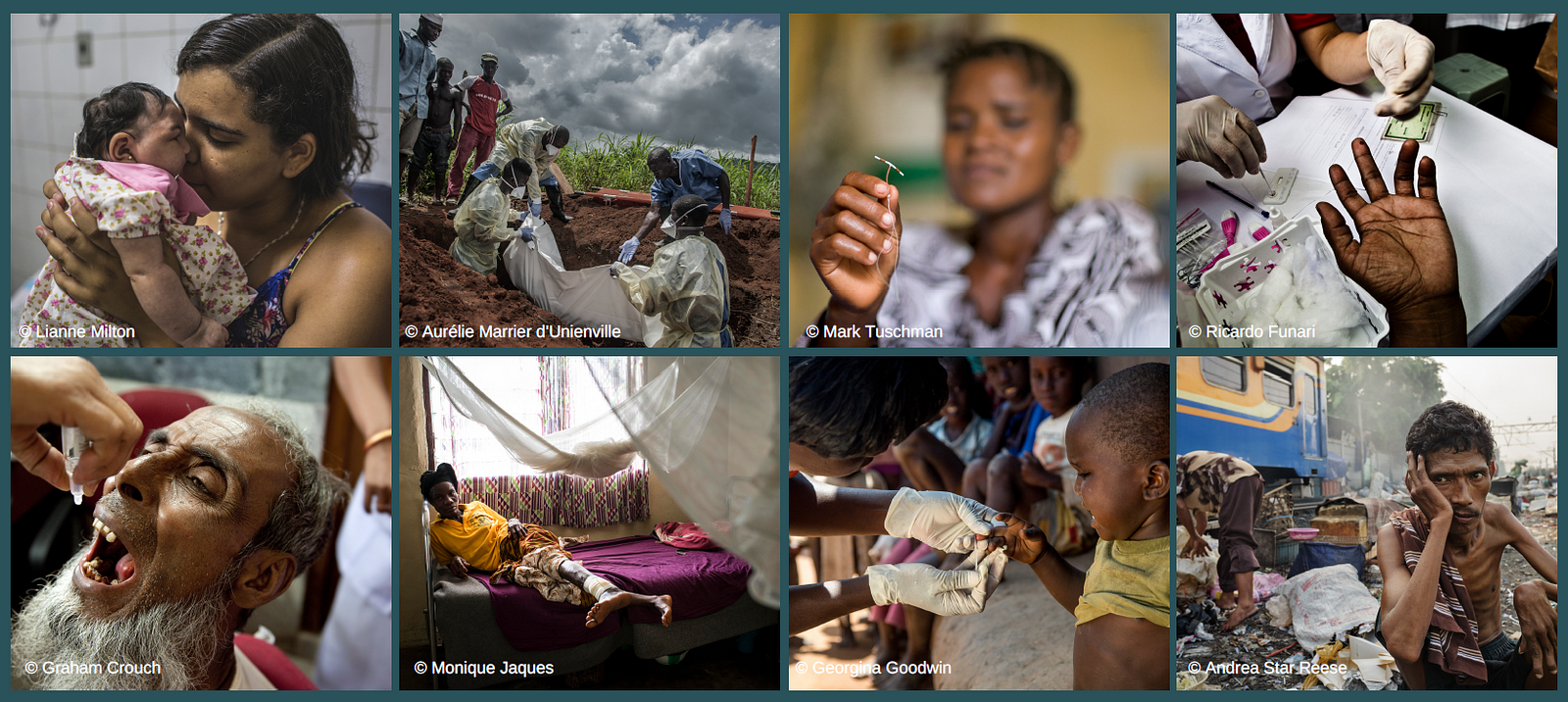Cover Photo / Photograph by Frederic Courbet
Last month at the Universal Health Coverage Forum in Tokyo, I witnessed Prime Minister Shinzo Abe inspire world leaders and advocates as they pledged their support for universal health coverage — the idea that everyone, everywhere, should be able to access quality health services.
The global movement for universal health coverage has come a long way thanks to the Government of Japan’s leadership. The next step is for governments and donors to make concrete investments that will help make universal health coverage a reality and for civil society to continue to hold leaders accountable.
There is lots of work to be done. Filling the gap in access to quality health services requires coordinated investments in innovation and healthcare delivery, which have traditionally been viewed as separate priorities, but in reality, are two sides of the same coin.

(From Innovation and Inequality, a UNDP-supported photography series shining a light on barriers to healthcare around the world.)
On the one hand, we desperately need new medicines, diagnostics and vaccines to fight deadly diseases. A warming world is spreading vector-borne diseases like dengue, malaria, and yellow fever faster and further than ever before, creating added urgency to develop innovations before these diseases spiral out of control. Antimicrobial resistance is also complicating the challenge. Resistance to artemisinin, the most effective anti-malarial drug, is spreading throughout Southeast Asia and outbreaks of drug-resistant tuberculosis are becoming increasingly common.
At the same time, innovations mean little without strong healthcare systems to deliver them. Multidrug-resistant tuberculosis (MDR-TB) is a deadly strain of tuberculosis — affecting half a million people each year — that does not respond to first line TB drugs, making it expensive and difficult to treat. Bedaquiline, a life-changing drug against MDR-TB, was approved in the United States more than five years ago. Yet to this day, bedaquiline is still not available in many low- and middle-income countries, even though these countries have rising rates of MDR-TB and are particularly vulnerable to outbreaks of the disease.
Achieving universal health coverage requires connecting the dots between innovation and delivery, ensuring that new medicines, diagnostics and vaccines are developed and ultimately reach the people who need them the most. Some governments, like Japan, are already stepping up to the challenge and delivering on their commitments to leave no one behind.
The Global Health Innovative Technology (GHIT) Fund — a partnership between the Government of Japan and UNDP, in collaboration with the Bill & Melinda Gates Foundation and a group of Japanese pharmaceutical companies — invests in medicines and other health technologies that have the potential to transform the lives of the world’s poorest and most vulnerable people.
The GHIT Fund is investing in innovations to battle some of the world’s biggest killers. For example, GHIT is currently investing in the development of a vaccine to block malaria transmission, which would prevent mosquitoes from passing the disease from one person to another — a critical step forward for the global response to malaria. Yet it’s not just about innovation; GHIT is also exploring how to balance cost, administration and storage considerations, to ensure that when the lifesaving product is developed, it meets people’s everyday needs.
GHIT also makes investments with an eye to where the market may fall short. One of its priority diseases is schistosomiasis, a neglected tropical disease (NTD) which can lead to stunted growth, impaired cognitive development and chronic inflammation. Existing medicines for the disease are large and bitter, making them difficult for young children to swallow, but private sector companies haven’t had an incentive to develop alternatives given that schistosomiasis affects the poorest and most vulnerable people in the world. GHIT has invested in developing a smaller and more palatable pill, helping to protect young children from this deadly disease.
For these innovations to achieve their full potential, they must be complemented by investments in improving access and delivery. The Access and Delivery Partnership (ADP)— a partnership between UNDP, the World Health Organization’s Special Programme for Research and Training in Tropical Diseases and PATH — helps countries strengthen their health systems and improve their capacities to deliver new health technologies to the poorest and most vulnerable.
ADP helps ensure that innovations, including those produced by the GHIT Fund, reach the people who need them. For example, NTDs like schistosomiasis affect five million people in Tanzania every year, trapping them into cycles of poverty and causing immense pain and disability. Mass drug administration campaigns are an effective and affordable way to treat NTDs, but health workers often don’t receive training on how to effectively run these campaigns, meaning that medicines are wasted or don’t reach the people who need them. Recognizing the extent of the problem, ADP developed training materials and guidelines for Tanzania’s NTD control program, which are currently used by 67,000 health workers in the country. ADP also works with the Government of Tanzania to identify and reduce inefficiencies in its $100 million NTD control program, helping to ensure that the program reaches as many people as possible.
GHIT and ADP’s work speaks to a reality that has been neglected for far too long: innovation and delivery go hand in hand. By addressing both in tandem, countries can make strides toward universal health coverage.
Last month at the Universal Health Coverage Forum, we learned that at least half of the world’s population of 7.3 billion people still lack access to essential health services. Investing in both innovation and healthcare delivery can help bridge this gap, achieve health for all and ensure that no one is left behind.
Dr. Mandeep Dhaliwal is the Director of the HIV, Health and Development Group at UNDP. She is also Chair of the Advisory Group for the Access and Delivery Partnership

